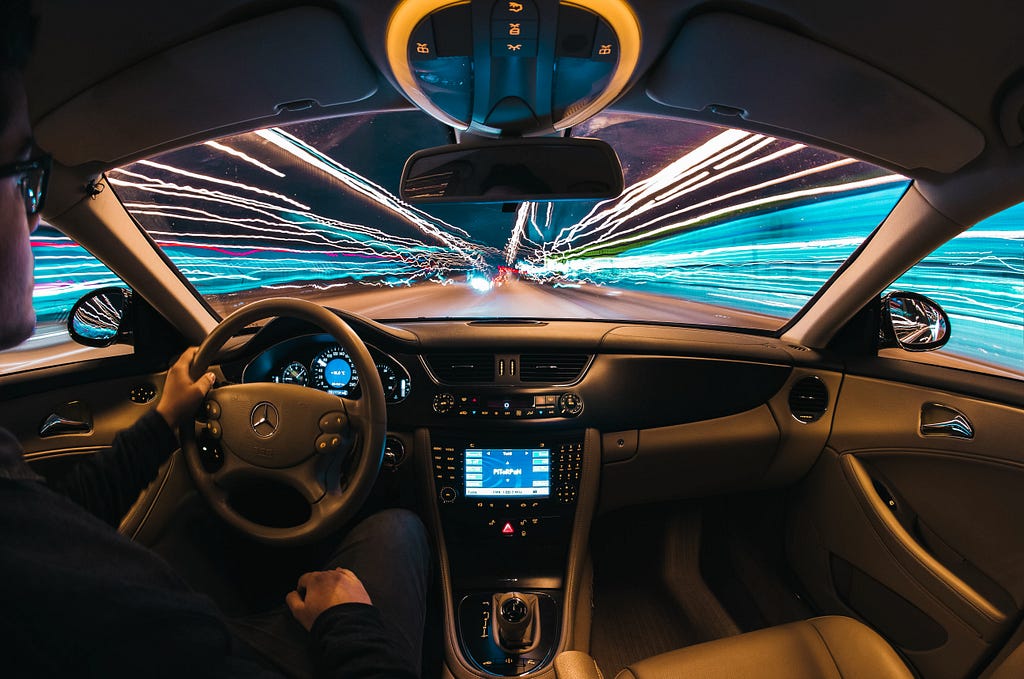
Levels of autonomous vehicles
Last Updated on November 12, 2021 by Editorial Team
Author(s): Mugunthan
Artificial Intelligence
Driverless cars or self-driving cars are not new to our society. The first one was developed as early as 1925 called American wonder. But it is from the year 1956 the driver-less car has seen a tremendous improvement. The inspiration for self-driving cars was from the busy traffic and number of accidents. You wouldn’t believe that more than 90% of the accident happening is because of human error. This could be avoided if driving could be automated.

Based on automation, the self-driving car is categorized into several categories.
Level 0 -No Automation: In this level, there is no automation, these are just regular vehicles and everything is controlled by the driver.
Level 1 -Driver Assistance: Here, the automation is either longitudinal control or latitudinal control but not both. For example, Adaptive Cruise Control where the speed is controlled automatically but the driver needs to steer the car to change lanes.
Level 2 -Partial Driving automation: A level 2 automated car can do both automated longitudinal and latitudinal control but in specific scenarios and under the supervision of the driver. Nissan pro pilot Assist and General Motors Super Cruise system both qualify as level 2 automation.
Level 3 -Conditional Driving Automation: Level 3 automation is one of the larger steps from a technology perspective. The difference between level 2 and level 3 is Object and Event Detection and Response (OEDR) with limited Operational Design Domain (ODD).
Wait. What are OEDR and ODD?
OEDR is the ability to detect objects and events that immediately affect the driving task and react to them appropriately.
ODD constitute the operating conditions under which a given system is designed to function. It includes environmental, time of the day, and other characteristics under which the car will perform reliably.
In level 3 automation, the driver doesn’t even need to have attention in certain conditions. However, the control is transferred to the driver in failure or in emergency cases.
Level 4 -High Driving Automation: This level comes with a fallback mechanism that can handle emergency situation autonomously. Passengers and drivers can concentrate on other tasks without compromising their safety. Still, the ODD is limited to certain environments and weather conditions and the driver can still take control of the car in emergency situations.
Level 5 -Full Driving Automation: This comes with full autonomy and with unlimited ODD. This can be operated in any climatic and weather conditions flawlessly. There is no need for a driver in this level of automation. There is no real-life example of this kind of automation yet, but we can hope to see them in action soon.
Levels of autonomous vehicles was originally published in Towards AI on Medium, where people are continuing the conversation by highlighting and responding to this story.
Published via Towards AI
Take our 90+ lesson From Beginner to Advanced LLM Developer Certification: From choosing a project to deploying a working product this is the most comprehensive and practical LLM course out there!
Towards AI has published Building LLMs for Production—our 470+ page guide to mastering LLMs with practical projects and expert insights!

Discover Your Dream AI Career at Towards AI Jobs
Towards AI has built a jobs board tailored specifically to Machine Learning and Data Science Jobs and Skills. Our software searches for live AI jobs each hour, labels and categorises them and makes them easily searchable. Explore over 40,000 live jobs today with Towards AI Jobs!
Note: Content contains the views of the contributing authors and not Towards AI.














